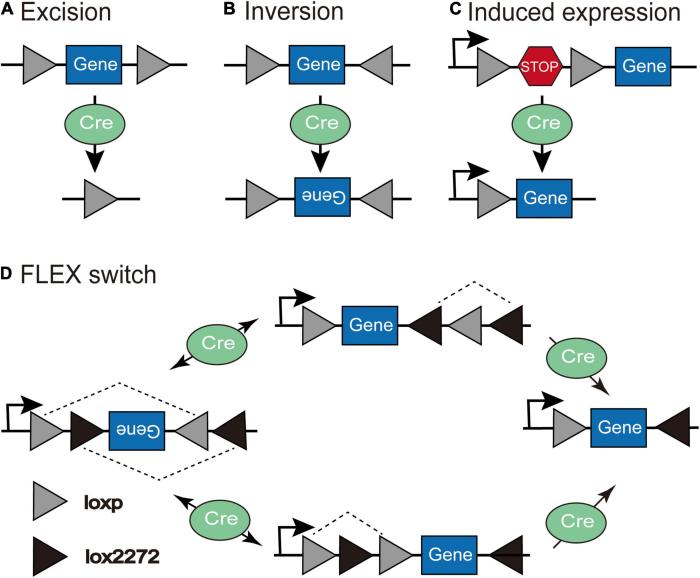
CRE logistics property surge is reshaping the commercial real estate landscape as demand skyrockets, driven by a variety of factors. With the rise of e-commerce and shifting consumer behaviors, logistics properties have become hot commodities, particularly in key geographic areas that are experiencing rapid growth.
This surge reflects broader market trends, revealing how the economic climate influences property values and the vital role logistics plays in meeting modern consumer needs. Understanding these dynamics is essential for investors looking to capitalize on the booming logistics sector.
CRE Logistics Property Surge
The surge in the commercial real estate (CRE) logistics sector has become a pivotal trend in the real estate market. Several factors contribute to this significant rise, including changing consumer behaviors, advancements in technology, and the booming e-commerce industry. With companies recognizing the need for efficient distribution channels, logistics properties have emerged as a strategic asset.
Factors Contributing to the Surge
The CRE logistics property surge can be attributed to a combination of several key factors:
- E-commerce Growth: The rapid expansion of online retail has increased the demand for logistics space to facilitate timely deliveries.
- Supply Chain Optimization: Businesses are re-evaluating their supply chains, leading to a greater need for strategically located warehouses.
- Technological Advancements: Innovations in automation and inventory management are making logistics properties more efficient and desirable.
Key Geographic Regions Experiencing Growth
Certain regions are experiencing a notable uptick in logistics property development. These areas include:
- Midwest: Known for its central location, the Midwest is becoming a logistics hub due to its proximity to major highways and railroads.
- California: Particularly in the Inland Empire, the demand for warehouse space is soaring, driven by e-commerce.
- Texas: Cities like Dallas and Houston are enhancing their logistics capacities with new developments.
Impact of E-commerce on Logistics Property Demand
E-commerce has significantly influenced the logistics property market. The need for rapid fulfillment centers has led to increased investments in properties that support fast delivery services. This shift emphasizes the importance of location, with proximity to urban centers becoming a crucial factor in property selection. Consequently, logistics properties are not just warehouses anymore; they are becoming integral parts of the retail experience.
Real Estate Investment Strategies
Investing in the current CRE logistics market requires strategic planning and a keen understanding of market dynamics. With the rapid evolution of the sector, investors must adapt their strategies to maximize returns.
Effective Investment Strategies
Several effective investment strategies can be employed in today’s CRE logistics market:
- Focus on Location: Targeting properties in high-demand areas can yield better returns due to increased market activity.
- Leverage Technology: Utilizing technology to streamline operations can enhance property value and appeal.
- Partnerships: Collaborating with logistics firms or e-commerce businesses can provide insights and open up new opportunities.
Importance of Diversification
Diversification within real estate portfolios is crucial. By investing in different types of properties—such as logistics, residential, and commercial—investors can mitigate risks associated with market fluctuations. This strategy not only protects investments but also maximizes overall returns.
Comparison with Traditional Real Estate Investments
Comparing logistics properties with traditional real estate investments reveals key differences:
- Return Potential: Logistics properties often offer higher returns due to the growing demand in e-commerce.
- Lease Terms: Logistics leases may have longer terms compared to traditional properties, providing stability.
- Market Dynamics: The logistics sector is more responsive to technological changes, influencing property values directly.
Real Estate Market Trends
The commercial real estate market is continuously evolving, driven by economic changes and consumer behavior. Understanding these trends is essential for investors and stakeholders.
Latest Trends in the Commercial Real Estate Market
Recent trends in the CRE market include:
- Rise of Mixed-Use Developments: Combining residential, retail, and logistics in a single development is becoming increasingly popular.
- Sustainability Focus: Eco-friendly buildings are gaining traction, as businesses prioritize sustainability.
- Remote Work Influence: The shift to remote work is affecting office space demand, with companies downsizing.
Economic Changes and Property Values
Economic fluctuations greatly influence CRE logistics property values. Factors such as interest rates, inflation, and employment rates can either enhance or diminish property valuations. For instance, low-interest rates typically boost property investments, leading to increased demand and higher values.
Shifts in Consumer Behavior

As consumer preferences shift toward faster delivery services and online shopping, logistics properties are becoming more essential. The focus is on convenience, pushing companies to invest in properties that enable quick distribution channels.
Smart Home Technology in Real Estate
The integration of smart home technology is reshaping the luxury real estate landscape. These innovations are not just add-ons; they have become vital features that enhance property value and appeal.
Integration of Smart Home Technology
Luxury real estate is increasingly incorporating smart technologies. Features like smart thermostats, security systems, and automated lighting systems are becoming standard. These technologies offer convenience, energy efficiency, and enhanced security, making them attractive to tech-savvy buyers.
Enhancing Property Values
Smart home features can significantly enhance property values. Properties equipped with advanced technology often sell for higher prices due to their appeal to modern buyers. As demand for tech-savvy homes rises, properties without such features may struggle to keep pace.
Growing Demand for Tech-Savvy Homes
Urban areas are witnessing a growing demand for homes that incorporate smart technology. Younger generations, especially millennials and Gen Z, prioritize homes that offer modern conveniences and connectivity. This trend is pushing developers to incorporate smart features into new residential projects.
Commercial Real Estate Overview
The commercial real estate landscape encompasses various segments, including retail, office, and logistics properties. Understanding this ecosystem is vital for investors and stakeholders.
Overview of the Commercial Real Estate Landscape
The commercial real estate market is diverse, with logistics properties playing a crucial role. This sector is becoming increasingly vital due to the rise of e-commerce and the need for efficient distribution networks. Investors are keenly aware of the potential in logistics properties, given the current market dynamics.
Role of Logistics Properties
Logistics properties serve as the backbone of the commercial real estate market. They facilitate the distribution of goods, ensuring that products reach consumers in a timely manner. As the demand for fast delivery continues to grow, logistics properties are becoming indispensable.
Statistics on Commercial Real Estate Growth
Recent statistics indicate significant growth in the logistics segment compared to other commercial real estate sectors. For example, logistics properties have seen a growth rate of over 10% annually, outpacing traditional office and retail spaces, which are experiencing stagnation.
Luxury Homes and Real Estate
The luxury real estate market is defined by unique features and evolving trends that set it apart from other segments. Understanding these characteristics is essential for investors looking to enter this high-stakes market.
Key Features of Luxury Homes
Luxury homes in today’s market are defined by specific characteristics:
- High-Quality Materials: The use of premium materials and finishes is a hallmark of luxury properties.
- Location: Prime locations with stunning views or exclusive neighborhoods are common in luxury real estate.
- Custom Design: Many luxury homes feature bespoke designs tailored to the owner’s preferences.
Trends in Luxury Real Estate
Current trends in luxury real estate include a focus on sustainable practices and wellness-oriented designs. Buyers are increasingly seeking properties that offer both luxury and eco-friendliness, reflecting a shift in consumer values.
Comparison with Logistics Property Investments
Investing in luxury homes compared to logistics properties reveals distinct differences. While luxury homes can offer aesthetic and lifestyle appeal, logistics properties provide more stable cash flows and are less susceptible to economic downturns. Investors must weigh these factors when deciding where to allocate their resources.
Luxury Real Estate Investment Opportunities
The luxury real estate sector presents unique investment opportunities, particularly as market dynamics shift. Understanding these opportunities can enhance portfolio performance.
Investment Opportunities in Luxury Real Estate
Investors can explore various opportunities within the luxury real estate sector:
- Vacation Rentals: High-end vacation properties can generate significant rental income in popular destinations.
- Commercial Luxury Developments: Investing in luxury mixed-use developments can yield high returns.
- Renovation Projects: Renovating older luxury homes can increase value significantly, especially in sought-after areas.
Return on Investment for Luxury vs. Logistics Properties
When comparing returns, logistics properties often provide a steadier income stream due to their long-term leases and demand driven by e-commerce. Meanwhile, luxury properties can yield high returns but may also come with higher risks related to market fluctuations.
Risks Associated with Luxury Real Estate Investments
Investing in luxury real estate comes with inherent risks. Market volatility, changing consumer preferences, and high maintenance costs can impact returns. Investors need to conduct thorough due diligence and be prepared for potential downturns in the luxury market.
Summary
In conclusion, the CRE logistics property surge presents both opportunities and challenges for investors and stakeholders within the commercial real estate market. As e-commerce continues to evolve, so too will the demands placed on logistics properties, making it imperative for investors to stay informed and adaptable to these ongoing changes.
Questions and Answers
What are the primary factors driving the CRE logistics property surge?
The surge is largely driven by the growth of e-commerce, increased demand for efficient supply chain solutions, and shifts in consumer shopping habits.
Which geographic regions are seeing the most growth in logistics properties?
Regions such as the Midwest, Southeast, and areas near major urban centers are experiencing significant growth due to their strategic locations for distribution.
How does e-commerce impact logistics property demand?
E-commerce has heightened the need for logistics properties that can accommodate rapid fulfillment and distribution, creating more demand for warehouses and distribution centers.
What investment strategies are effective in the current CRE logistics market?
Diversification, focusing on high-demand locations, and understanding market trends are key strategies for success in logistics property investments.
How do logistics properties compare to traditional real estate investments?
Logistics properties typically offer higher yields and growth potential compared to traditional real estate, but they also come with their own set of risks and considerations.






